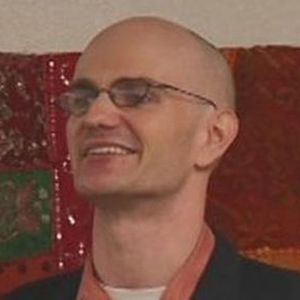3 keys to developing inner productivity
As I’ll bet you know firsthand, it’s hard to get much done when our minds keep drifting off into the past or the possible future — replaying arguments with loved ones, worrying about the size of the bonus we’ll receive this year, and so on. The usual “tips and tricks” — efficient ways to organize e-mail, make to-do lists, hold shorter meetings, and so on — can be useful, but they won’t do much to help us get more done if we can’t focus our attention.
The good news is that what I call “inner productivity” — the mental and emotional state we need to work at peak efficiency — can be cultivated. Many methods for doing this have been around in the East for thousands of years, but are just beginning to enter the “mainstream” in the West. I’ll describe what I see as the three basic elements of inner productivity — Attention, Intention, and Foundation — and some exercises for developing them within ourselves.
1. Attention
We’re most efficient, and produce our best work, when our task has our full attention. Often, our awareness is only partly focused on our project, and the rest of it is lost in memories and possible futures.
How can we build our capacity to hold our attention on our work? One helpful technique, which comes from meditation practice, is to notice the sensations you’re feeling in your body — whether it’s a warmth, tingling, tension, or something else.
A great way to start doing this is to train your awareness on part of your body that’s in contact with an object, such as your feet on the floor or your back against your chair. Focus your attention on the pressure of the object against you.
Although our thoughts are often lost in the past or future, the sensations in our bodies are always happening right now, and thus focusing on them helps to bring our attention back into the present and onto the task in front of us. As you practice this exercise over time, you may find that, when distracting thoughts arise in your work, you begin naturally, unconsciously bringing your attention back into your body and thus into the present.
2. Intention
Another common reason we find our attention floating away from our tasks is that we aren’t working with a clear, compelling goal in mind. Perhaps there’s no grand vision behind what we’re doing — we’re only working to pay the bills, or we just feel like “we’ve got to do something.” Or, although we have a definite goal — maybe, for instance, buying a bigger house — that goal comes from a desire to meet others’ expectations, and doesn’t deeply move us.
In these situations, I’ve found, it’s helpful to connect with our desire to contribute to and serve others. A yoga technique often called “breathing into your heart” is a wonderful way to do this. According to yoga, there’s an energetic center in the heart area called the “heart chakra.” When we “open” the heart chakra by breathing into it, we feel our sense of compassion for others, and our desire to give to the world.
To breathe into your heart, clasp your hands behind your back at the level of your heart, and stretch out your arms. Then, breathe deeply so your upper chest rises and falls with the breath. (You may even be able to do this without getting out of your chair.) Feel the warmth and openness in your heart area, and notice any tension melting away.
3. Foundation
An important, but often overlooked, factor in our productivity is how comfortable we feel with ourselves. If we’re constantly afraid of making a mistake in our work, as if a setback could destroy us, we’ll over-think and second-guess everything we do, and we won’t make the kind of progress we want.
According to yoga, there’s another energetic center at the base of the spine called the “root chakra.” Breathing into the root chakra gives us a sense of grounded-ness and stability. Doing this can be very useful when you’re feeling anxious at work.
To breathe into the root chakra, put your attention on the base of your spine, where the spine meets the pelvis. If focusing on that area is difficult, place your hand on your lower back, and concentrate on the sensation of pressure there. With your attention on the base of your spine, take a few deep breaths. When you do this, you’ll likely feel a deep-seated sense of solidity, and that paralyzing worry will start to fade.
Photo: © Yuri Arcurs / Shutterstock

